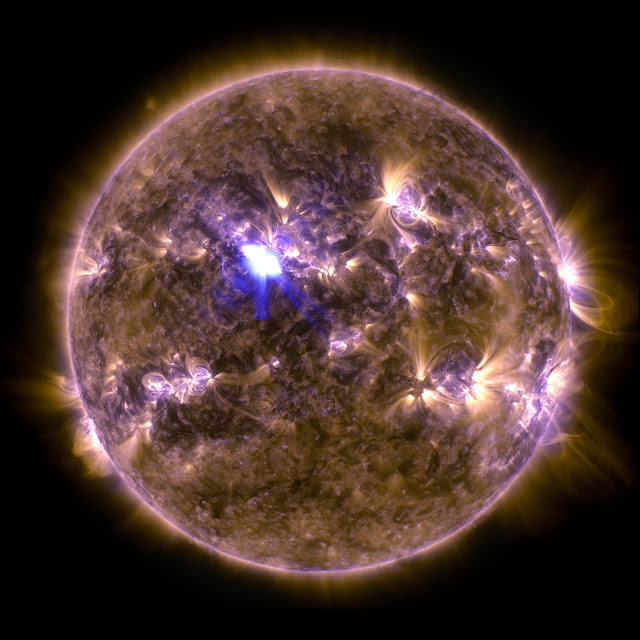The M6.5 flare on the morning of April 11, 2013, was also associated with an Earth-directed coronal mass ejection (CME), another solar phenomenon that can send billions of tons of solar particles into space and can reach Earth one to three days later. CMEs can affect electronic systems in satellites and on the ground. Experimental NASA research models show that the CME began at 3:36 a.m. EDT on April 11, leaving the sun at over 600 miles per second.
Earth-directed CMEs can cause a space weather phenomenon called a geomagnetic storm, which occurs when they connect with the outside of the Earth's magnetic envelope, the magnetosphere, for an extended period of time.
The recent space weather also resulted in a weak solar energetic particle (SEP) event near Earth. These events occur when very fast protons and charged particles from the sun travel toward Earth, sometimes in the wake of a solar flare. These events are also referred to as solar radiation storms. Any harmful radiation from the event is blocked by the magnetosphere and atmosphere, so cannot reach humans on Earth. Solar radiation storms can, however, disturb the regions through which high frequency radio communications travel.
NOAA's Space Weather Prediction Center is the United States Government official source for space weather forecasts, alerts, watches and warnings. NASA and NOAA – as well as the US Air Force Weather Agency (AFWA) and others -- keep a constant watch on the sun to monitor for space weather effects such as geomagnetic storms. With advance notification many satellites, spacecraft and technologies can be protected from the worst effects.
The sun emitted a mid-level flare, peaking at 3:16 a.m. EDT on April 11, 2013.
Solar flares are powerful bursts of radiation. Harmful radiation from a flare cannot pass through Earth's atmosphere to physically affect humans on the ground, however -- when intense enough -- they can disturb the atmosphere in the layer where GPS and communications signals travel. This disrupts the radio signals for as long as the flare is ongoing, anywhere from minutes to hours.
This flare is classified as an M6.5 flare, some ten times less powerful than the strongest flares, which are labeled X-class flares. M-class flares are the weakest flares that can still cause some space weather effects near Earth. This flare produced a radio blackout that has since subsided. The blackout was categorized as an R2 on a scale between R1 and R5 on NOAA’s space weather scales.
This is the strongest flare seen so far in 2013. Increased numbers of flares are quite common at the moment, since the sun's normal 11-year activity cycle is ramping up toward solar maximum, which is expected in late 2013. Humans have tracked this solar cycle continuously since it was discovered, and it is normal for there to be many flares a day during the sun's peak activity.
Images Credit: ESA&NASA/SOHO/GSFC
Explanation from: http://www.nasa.gov/mission_pages/sunearth/news/News031513-m6flare.html






No comments:
Add your comment